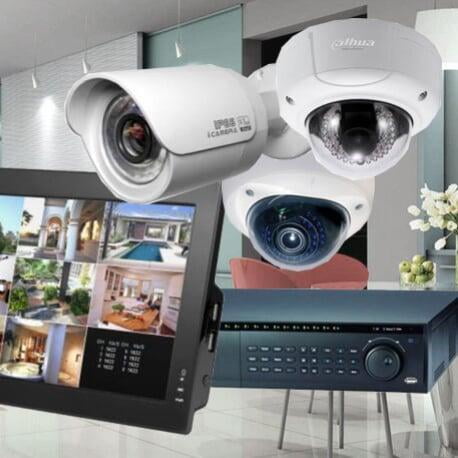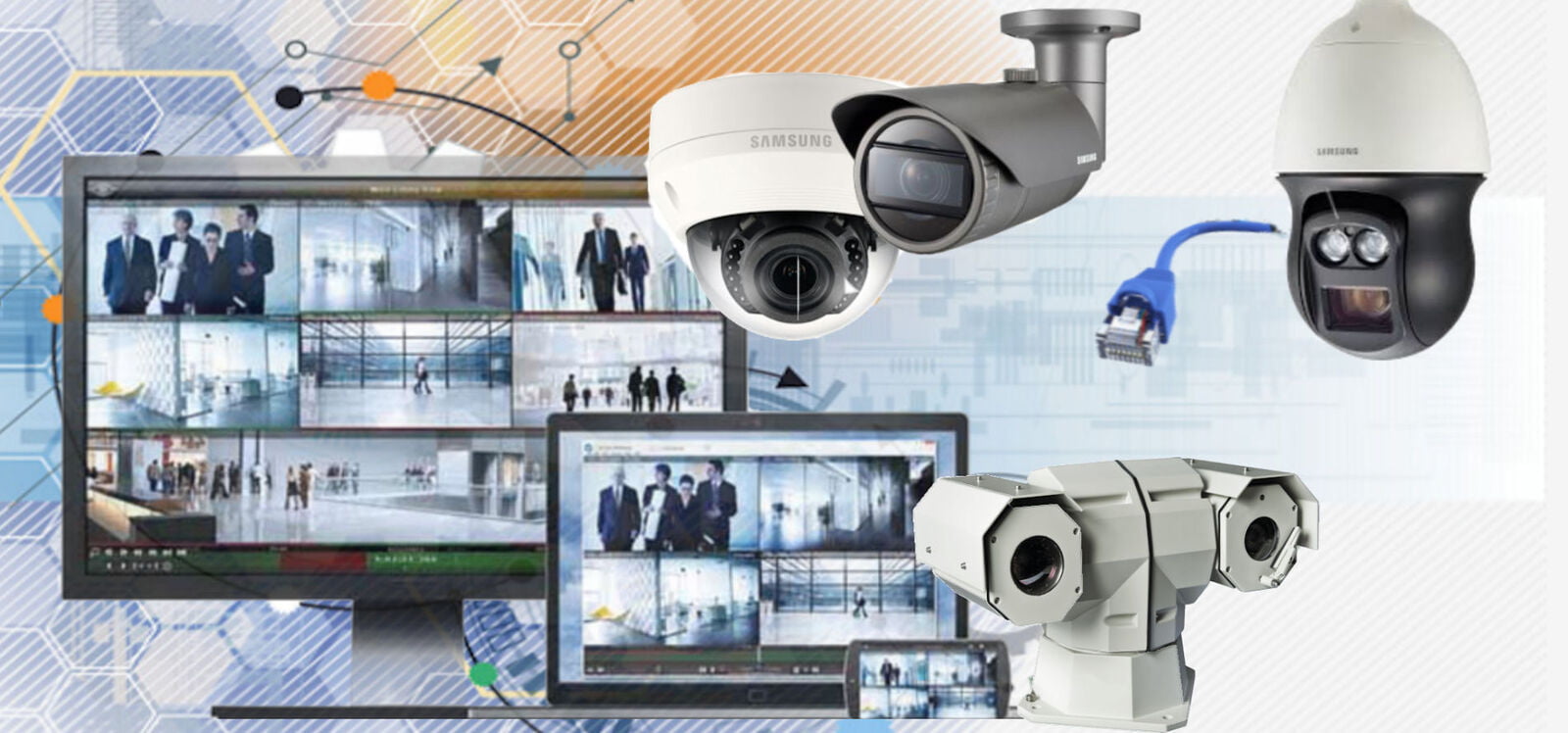
Are you looking to install a new security camera system to protect your Home, business or commercial property?
Are you looking to install a new security camera system to protect your Home, business or commercial property?
There are several reasons why homes and businesses can benefit from the use of IP cameras (Internet Protocol cameras) over analogue cameras. Here are some key advantages of IP cameras:
Higher resolution: IP cameras generally offer higher resolution and image quality compared to analogue cameras. They can capture and transmit video in high definition (HD) or even ultra-high definition (UHD) formats, providing greater clarity and detail. This enhanced resolution is particularly valuable when it comes to identifying people or objects in the footage, making it easier to recognize faces, license plates, or other important details. Remote access and monitoring: One of the significant advantages of IP cameras is their ability to be accessed and monitored remotely. As IP cameras are connected to the internet, users can view live video feeds and recorded footage from anywhere using a computer, smartphone, or tablet. This feature allows homeowners and business owners to keep an eye on their property and monitor activities even when they are not physically present.
Scalability and flexibility: IP camera systems are highly scalable and flexible. Whether you need to monitor a small home or a large business complex, you can easily add or remove IP cameras as required. Additionally, IP cameras can be integrated with other security systems and devices, such as alarms or access control systems, to create a comprehensive and customizable security solution tailored to your specific needs.
Advanced features and analytics: IP cameras often come with advanced features and built-in analytics capabilities. These can include motion detection, facial recognition, object tracking, and even behavioral analytics. These features allow for more effective monitoring and can trigger alerts or notifications when specific events occur, enhancing the overall security of a property.
Easy installation and maintenance: IP cameras are typically easier to install and maintain compared to analogue cameras. They often use Power over Ethernet (PoE) technology, which allows both power and data to be transmitted through a single Ethernet cable, simplifying the wiring process. Additionally, IP camera systems can be centrally managed through a dedicated software or web-based interface, making it convenient to configure settings, perform firmware updates, and manage multiple cameras from a single location.
Integration with other systems: IP cameras can integrate seamlessly with other security and surveillance systems. They can be connected to a network video recorder (NVR) or a cloud-based storage system, allowing for efficient storage and retrieval of video footage. Integration with smart home automation systems is also possible, enabling users to control and monitor their IP cameras alongside other connected devices.
Cost-effective in the long run: While IP cameras may have a higher upfront cost compared to analogue cameras, they often prove to be more cost-effective in the long run. With their superior image quality and advanced features, IP cameras provide better value for money by delivering clearer evidence, reducing false alarms, and offering more comprehensive security coverage.
In conclusion, IP cameras offer numerous advantages over analogue cameras, including higher resolution, remote access and monitoring, scalability , advanced features and analytics, easy installation and maintenance, integration capabilities, and long-term cost-effectiveness. These benefits make IP cameras a preferred choice for homes and businesses seeking reliable and advanced surveillance solutions.

Here are some additional details about why homes and businesses can benefit from using IP cameras over analogue cameras:
Wide coverage and multiple viewpoints: IP cameras often have a wider field of view compared to analogue cameras, allowing them to capture more area with a single camera. This can be particularly beneficial for large spaces or outdoor areas where comprehensive coverage is required. Additionally, many IP cameras support pan, tilt, and zoom (PTZ) functionality, allowing users to remotely adjust the camera's position and zoom in on specific areas of interest.
Enhanced low-light performance: IP cameras often have better low-light performance, thanks to advanced image sensors and technologies such as infrared (IR) illumination. This enables them to capture clear and detailed images even in challenging lighting conditions, such as at night or in dimly lit areas. Improved low-light performance is crucial for maintaining effective surveillance and ensuring that critical details are captured in various lighting scenarios.
Network integration and scalability: IP cameras operate on computer networks, which means they can be easily integrated into existing network infrastructure. They can utilize existing Ethernet cabling or wireless networks, reducing the need for extensive additional wiring. This integration also allows for easy expansion and scalability as the network infrastructure can accommodate multiple cameras and support future growth or changes in surveillance needs.
Remote management and control: IP cameras can be managed and controlled remotely through dedicated software or web-based interfaces. This remote management capability enables users to configure camera settings, adjust parameters, and access live video feeds from anywhere with an internet connection. It provides convenience and flexibility in monitoring and managing the camera system, saving time and effort compared to analogue cameras that often require physical adjustments or maintenance.
Integration with video analytics and AI: IP cameras can leverage advanced video analytics and artificial intelligence (AI) capabilities. These technologies enable features such as people counting, object detection, facial recognition, and even behavior analysis. Video analytics can help automate surveillance processes, detect anomalies or security breaches, and generate alerts or notifications based on predefined rules. This intelligent functionality enhances the effectiveness and efficiency of surveillance systems, making IP cameras a powerful tool for proactive security monitoring.
Cloud-based storage and remote access: Many IP camera systems offer cloud-based storage options. This allows for convenient and secure storage of video footage in off-site servers, eliminating the need for on-site hardware storage devices. Cloud storage provides redundancy, data protection, and easy access to video recordings from anywhere, without the risk of local storage device failures or physical tampering.
Integration with other smart devices: IP cameras can integrate with other smart devices and systems, such as home automation systems, access control systems, or alarm systems. This integration allows for a more comprehensive and interconnected security ecosystem, where cameras can be triggered by or trigger other devices based on specific events or conditions. For example, an IP camera can start recording when a motion sensor is triggered or send a notification to a homeowner's smartphone when a door is unlocked.
Remote troubleshooting and support: IP cameras often have built-in remote troubleshooting and support capabilities. In case of technical issues or configuration problems, support personnel can remotely access the camera system and diagnose or resolve the problem without requiring an on-site visit. This saves time and effort, ensuring that the camera system remains operational and minimizes downtime.
By leveraging the advantages of IP cameras, homes and businesses can enjoy enhanced security, improved surveillance capabilities, remote accessibility, intelligent analytics, and seamless integration with other systems. These features make IP cameras a versatile and powerful choice for those seeking advanced and efficient surveillance solutions.

